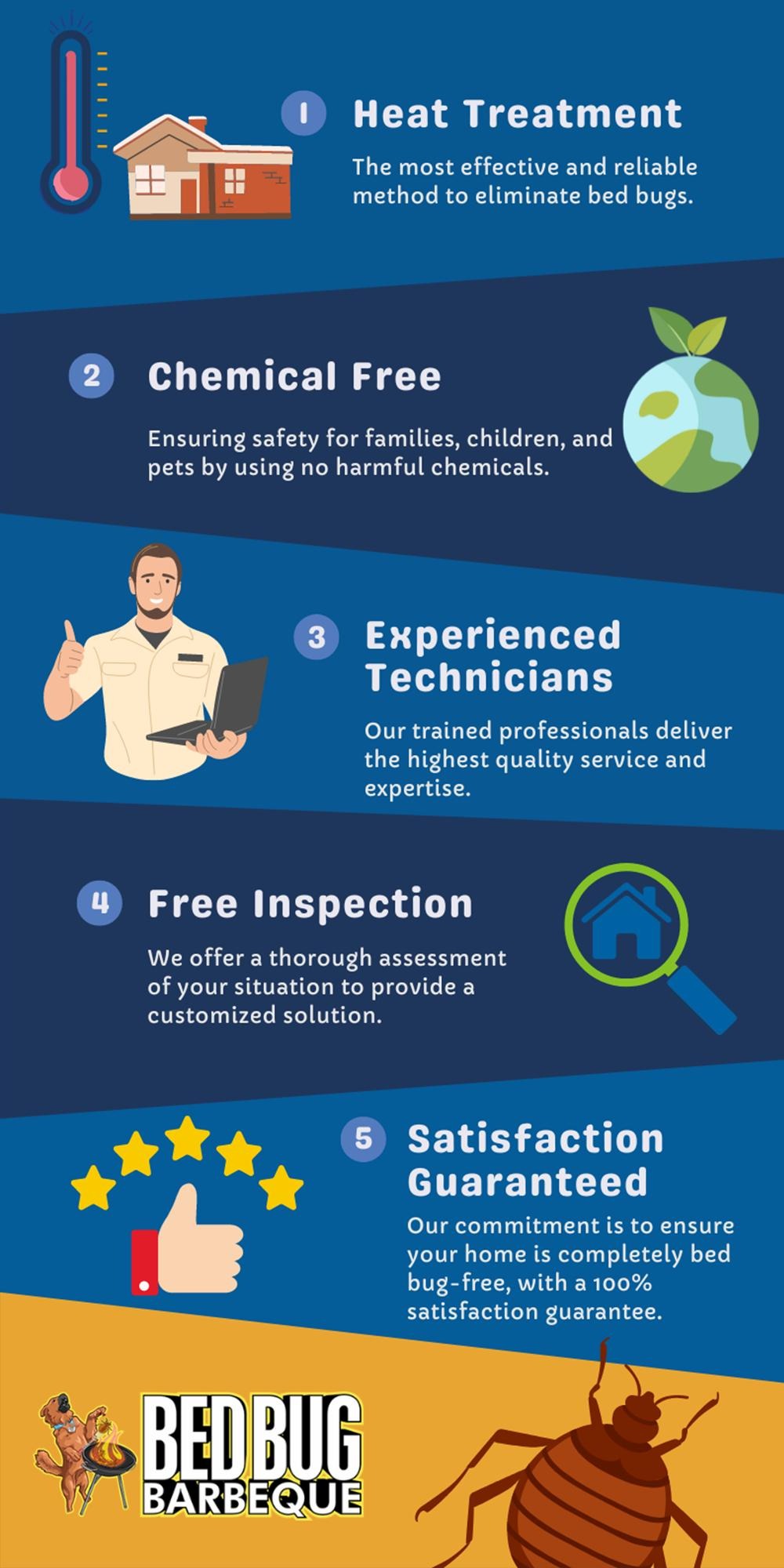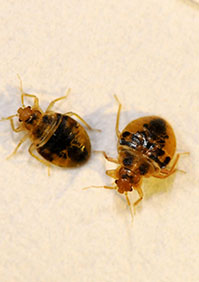How to Identify Bed Bug Bites and Prevent Future Infestations
Get Enlightened About the Sorts Of Pest Control Techniques and Their Benefits for Homeowners
Understanding the different pest control approaches readily available to home owners is vital for efficient bug management. Home owners who are knowledgeable can make strategic options that not only address insect concerns but additionally enhance the total quality of their living environment.
Chemical Bug Control Methods
Chemical parasite control approaches are a crucial element of integrated pest monitoring techniques for property owners seeking effective remedies to pest problems. These methods entail the application of chemical substances created to eliminate or discourage pests that threaten personal property, health and wellness, and comfort. Usual chemicals made use of include insecticides, herbicides, fungicides, and rodenticides, each customized to target details insects.
The key benefit of chemical parasite control is its rapid efficiency; many formulations supply immediate outcomes, decreasing pest populaces considerably in a short time. In addition, developments in chemical formulas have brought about products that are much more eco-friendly and have lower toxicity levels for non-target organisms when used properly.

Organic Insect Control Techniques
Natural insect control methods have obtained prominence as home owners look for more secure and extra lasting alternatives to typical chemical techniques. Organic bug control techniques use all-natural killers, bloodsuckers, or microorganisms to take care of parasite populations properly. This method is not just ecologically friendly but additionally minimizes the danger of damage to non-target varieties, including beneficial bugs and wild animals.
One of one of the most typical biological control techniques includes introducing natural killers right into the environment. Ladybugs can be used to control aphid populaces, while nematodes target soil-dwelling bugs like grubs. Furthermore, parasitoids-- microorganisms that survive or within a host-- can be utilized to manage particular parasite varieties by laying eggs inside them, ultimately resulting in their death.
An additional method is using biopesticides, which are derived from natural materials such as germs, minerals, or plants (bed bug exterminator). These items can efficiently target insects while posing minimal threat to people and pet dogs. Overall, biological pest control techniques give house owners with an efficient ways of parasite monitoring that lines up with ecological principles, promoting a healthier living atmosphere while lowering reliance on synthetic chemicals
Mechanical Bug Control Approaches
Mechanical insect control approaches incorporate a selection of techniques that literally stop or eliminate insects without the use of chemicals. These methods are specifically useful for home owners seeking eco-friendly options while making sure the safety and security of their living areas.
One usual method is the use of barriers, such as catches, screens, and internet, which protect against pests from going into homes or details areas. For instance, setting up window displays can properly maintain insects out, while using physical barriers around gardens can prevent larger pests like deer or rabbits. Furthermore, mechanical traps designed for rats can record and get rid of these bugs without the need for poisonous materials.
One more reliable technique entails using vacuum cleaners and brooms to remove insects directly from surfaces. Routine cleaning and upkeep can considerably lower bug populaces by eliminating food resources and hiding areas. Employing devices like ultrasonic pest repellents can prevent numerous insects through noise waves that are undesirable to them however inaudible to humans.
Cultural Bug Control Practices
Cultural pest control techniques concentrate on modifying the setting more information and administration methods to develop conditions that are much less for pest infestations. These practices are basic in maintaining a balanced ecological community and minimizing the reliance on chemical treatments. By changing agricultural methods, house owners can effectively deter insects while promoting plant wellness.
One usual technique includes plant rotation, which interferes with the life cycles of parasites by altering the kinds of plants expanded in a specific area (bed bug exterminator). This not just reduces pest populaces but additionally boosts soil health and wellness. Additionally, intercropping-- planting diverse plants in proximity-- can puzzle pests and decrease their capability to find their recommended host plants
Water administration is another important aspect of social methods. Appropriate watering methods can protect against standing water, which functions as a reproduction ground for mosquitoes and various other insects. Keeping tidiness in and around the you can find out more home, such as routinely removing particles and food waste, can considerably lower pest destination.
Integrating these social practices into a comprehensive parasite management approach allows home owners to develop a setting that normally deters pests, thereby enhancing the effectiveness of other control approaches while promoting lasting gardening and landscape design.

Integrated Pest Management Approaches
Integrated Pest Management (IPM) stands for an all natural method that combines various strategies to efficiently take care of parasite populations while reducing environmental impact. This approach integrates biological, social, physical, and chemical practices to achieve sustainable bug control. By examining pest populations and their natural enemies, IPM highlights tracking and recognizing insects prior to applying control measures.
Among the core principles of IPM is making use of thresholds, which develop the level of bug activity that calls for treatment. This ensures that treatments are applied only when needed, decreasing the dependence on chemical pesticides. Biological control approaches, such as presenting all-natural predators or parasites, operate in combination with social methods like crop turning and environment manipulation to disrupt pest life process.
Furthermore, IPM motivates the usage of least-toxic chemical alternatives when treatment is needed, focusing on products that present marginal danger my explanation to non-target organisms and the environment. For house owners, taking on IPM comes close to not only improves the effectiveness of pest management but additionally promotes a healthier living setting, fostering biodiversity and lowering chemical direct exposure. Eventually, IPM equips house owners to make educated decisions that stabilize bug control with environmental responsibility.
Verdict
In conclusion, comprehending the different pest control techniques equips property owners to make informed decisions concerning pest management. Each method-- chemical, biological, mechanical, social, and integrated pest administration-- uses distinct benefits that cater to different requirements and preferences.
Understanding the various insect control techniques available to home owners is important for effective pest management.Chemical bug control methods are a vital element of incorporated insect monitoring methods for house owners looking for effective solutions to pest infestations. Generally, biological pest control methods give house owners with an effective ways of bug monitoring that aligns with eco-friendly concepts, promoting a healthier living atmosphere while minimizing reliance on synthetic chemicals.
Cultural pest control methods focus on modifying the atmosphere and monitoring techniques to produce problems that are much less conducive to pest invasions.In conclusion, recognizing the different parasite control methods equips property owners to make enlightened decisions regarding pest monitoring.